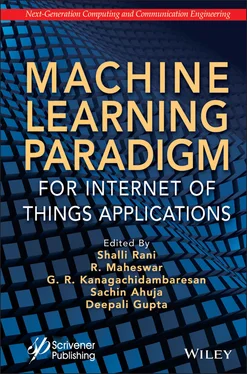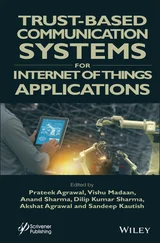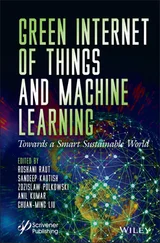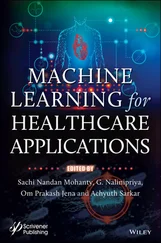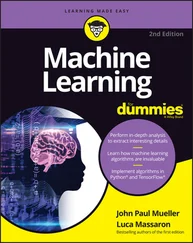Machine Learning Paradigm for Internet of Things Applications
Здесь есть возможность читать онлайн «Machine Learning Paradigm for Internet of Things Applications» — ознакомительный отрывок электронной книги совершенно бесплатно, а после прочтения отрывка купить полную версию. В некоторых случаях можно слушать аудио, скачать через торрент в формате fb2 и присутствует краткое содержание. Жанр: unrecognised, на английском языке. Описание произведения, (предисловие) а так же отзывы посетителей доступны на портале библиотеки ЛибКат.
- Название:Machine Learning Paradigm for Internet of Things Applications
- Автор:
- Жанр:
- Год:неизвестен
- ISBN:нет данных
- Рейтинг книги:4 / 5. Голосов: 1
-
Избранное:Добавить в избранное
- Отзывы:
-
Ваша оценка:
- 80
- 1
- 2
- 3
- 4
- 5
Machine Learning Paradigm for Internet of Things Applications: краткое содержание, описание и аннотация
Предлагаем к чтению аннотацию, описание, краткое содержание или предисловие (зависит от того, что написал сам автор книги «Machine Learning Paradigm for Internet of Things Applications»). Если вы не нашли необходимую информацию о книге — напишите в комментариях, мы постараемся отыскать её.
As companies globally realize the revolutionary potential of the IoT, they have started finding a number of obstacles they need to address to leverage it efficiently. Many businesses and industries use machine learning to exploit the IoT’s potential and this book brings clarity to the issue. Machine Learning Paradigm for Internet of Thing Applications
Machine Learning Paradigm for Internet of Things Applications — читать онлайн ознакомительный отрывок
Ниже представлен текст книги, разбитый по страницам. Система сохранения места последней прочитанной страницы, позволяет с удобством читать онлайн бесплатно книгу «Machine Learning Paradigm for Internet of Things Applications», без необходимости каждый раз заново искать на чём Вы остановились. Поставьте закладку, и сможете в любой момент перейти на страницу, на которой закончили чтение.
Интервал:
Закладка:
Business models unbundling, which could be used by organizations carrying out these three basic business types: customer relations; product innovation and infrastructure enterprises (e.g., private banking).
The long tail business model where an organization is seeking to sell less for more. This paradigm can be solved by selling a diverse variety of specialty items, each of which sells relatively infrequently (i.e., LEGO).
Multi-sided networks, which put together two or more separate but interdependent classes of consumers (i.e., video console manufacturers).
Free market model consistently rewards at least one large consumer group from a free-of-charge deal (i.e., mobile phone operators).
1.7.1 Fundings
Web-based market models match the trends described above. These findings suggest that the open pattern “conquers” web-based models, though there are still unbundling instances. Except in web-based situations, contemporary business models remain and the city acts as a direct information and service provider to its residents and businesses, on the other side, published on different smart city market models. While market models are not to be followed in public institutions (i.e., Masdar and Gdansk) [24], even in these ways the municipality uses smart cities to draw tourists, inhabitants, and investment. These studies also named members to two contemporary business model classes:
1 E-Service market model.
2 Openness in ownership of the private enterprise and the ICT network.
A specific provider (or stakeholder groups) was treated as provided in each service category. The network owner creates value for people and businesses. A significant result of this assignment process is the appointment of business model trends in cases that have no relevant network-related business models. This is fair because all of these municipal types need different resources (networks and grids, sensors, etc.). The unbundled trend is still in effect even though these facilities are leased for service provision. When the IoT is used as the main resource that results in the IoT market models involved, circumstances change [24, 25]. In the above-mentioned situations, though, cities have still not capitalized IoT, which helps start-ups and other vendors to build value.
1.8 Community-Based Development
1.8.1 Smart Medical Care
This approach aim, however, is focused on the individual experiences of professionals and/or neighborhood associations, to recognize the health concerns of the whole community. The value of such an approach is both cheap and constant, but it lacks the rigors of more rigorous quantitative methods and less likely to detect latent challenges within the group. In comparison, the practice of formal group consensus methods will address this role more thoroughly and rigorously in order to create consensus strategies so as to avoid narrowing the number of possible problems to consider, as is the tendency of various quantitative approaches.
Using data, however, the data must be extrapolitanized from wide region information in order to recognize urban health issues. The validity of the method ultimately relies on the amount of burden the wide region has taken on the society [21]. By using secondary data, such as vital statistics and census data, more comprehensive research is difficult for the practice as general problems are established.
Tendency, though to rely on some health conditions, may miss a significant issue merely because it was not part of the dataset. For example, an epidemiological analysis of diastolic blood pressure within the population may produce advanced data on distribution, correlates, and hypertension determinants. At the cost of a larger data collection, though, the information in the hypertension set is collected. The use of these data to classify the health issues of the population may also make it easier for the profession to ignore some (maybe more critical) problems of health.
1.8.2 Smart Safety for The IT
A smart public safety infrastructure is being built to provide the public with a better atmosphere for ordinary people. This system is complicated, distributed over all campuses of the University. It consists of a smart cameras tracking system, a backroom system with workflow engine and a smart-phone device within the context of a collaboration concept. The intelligent cameras are deployed and this last year the smartphone device and the back-office device with acceptable results are used. The smartphone app is the user entry point for documenting many problems pertaining to security and campus management which are instantly forwarded to the responsibilities team when they are taken directly in the event of security or join an integrated working flow engine when running the campus [21]. This paper reveals the framework for achieving a more intelligent climate for public protection, specifics of operation, and statistical evidence obtained by the system.
1.8.3 IoT Communication Interface With ML
The preparation and preparing of information for such interactions is a critical activity. To respond to this issue, various types of data processing, such as edge analytics, stream analysis, and database IoT analysis, must be applied [22]. Computing frameworks play an vital role in connecting the server with neighboring computer structures and frameworks that depend on the location and the processing server where the data is processed. Architecture is basically classified into several categories for the networking and filter data for data centers.
Edge Computing:This approach to computation allows data to initially be stored on edge computers. Edge devices cannot be linked continuously to the network, so a backup of the master data/reference data is required for offline processing.
Cloud Computing:This approach and the design has high latency and high load balance, which means that this architecture is not ideal for the processing of IoT data since it can work for other processing at high speeds.
There are several other type of cloud computing services like Iaas, Paas, and Saas. These are equipped with the data transmission via API or several other SDK kit for the user interface.
1.8.4 Machine Learning Algorithms
ML allows a computer to automatically learn and grow (without directly being programmed). Overall, ML algorithms can be classified as being (i) managed, (ii) unmonitored, and (iii) evolutionary computation. In reinforcement methods, a description is associated with each input value, while input values remain unlabeled in unsupervised learning. Learning algorithm implements a reinforcement-based mechanism in which the goal is to choose the set of environmental activities that optimize the overall benefit. There are some several types of machine learning algorithms, namely, SVM (Support Vector Machine). For both classification and regression queries [33], SVMs are valid, but they are widely used for the former. A binary SVM performs a binary division, generating a hyperplane such that it is possible to classify input values into two groups.
For applications with a restricted number of stakeholders, SVMs are highly important. The system relies on numerous voice recording sensors to track the voices of patients such as handheld computers, voice recorders, and smartphones. To differentiate between the characteristics of good and unsafe consumers at a higher accuracy rate, SVM is then added to the data (on a cloud-based server). Storage processing method in the machine learning branched into cloud storage and processing and edge storage and processing.
1.8.5 Smart Community
The entire SCM program is supervised by an Apex governance system which consists of many national committees at state and city level. The SCM is a three-level governance structure. A special purpose vehicle (SPV) is used for executing the mission on a city scale. The SPV manages the funding, executes the programs, and administers and reviews them. The company is headed by a full-time CEO and has nominated on the board by the Federal Government, the State Government and ULB (Urban Development Ministry, 2015) [26]. The SC schemes are carried out by joint ventures, subsidiaries, PPP, etc. In addition, the cities have used a convergence process to support the SC initiative. These structures of convergence allow the cities to receive funds from other successful missions such as Digital India, Housing for everyone, production of national patrimony skills, and the Missions of Swachh Bharat, for the creation and development of a number of intelligent cities initiatives.
Читать дальшеИнтервал:
Закладка:
Похожие книги на «Machine Learning Paradigm for Internet of Things Applications»
Представляем Вашему вниманию похожие книги на «Machine Learning Paradigm for Internet of Things Applications» списком для выбора. Мы отобрали схожую по названию и смыслу литературу в надежде предоставить читателям больше вариантов отыскать новые, интересные, ещё непрочитанные произведения.
Обсуждение, отзывы о книге «Machine Learning Paradigm for Internet of Things Applications» и просто собственные мнения читателей. Оставьте ваши комментарии, напишите, что Вы думаете о произведении, его смысле или главных героях. Укажите что конкретно понравилось, а что нет, и почему Вы так считаете.
